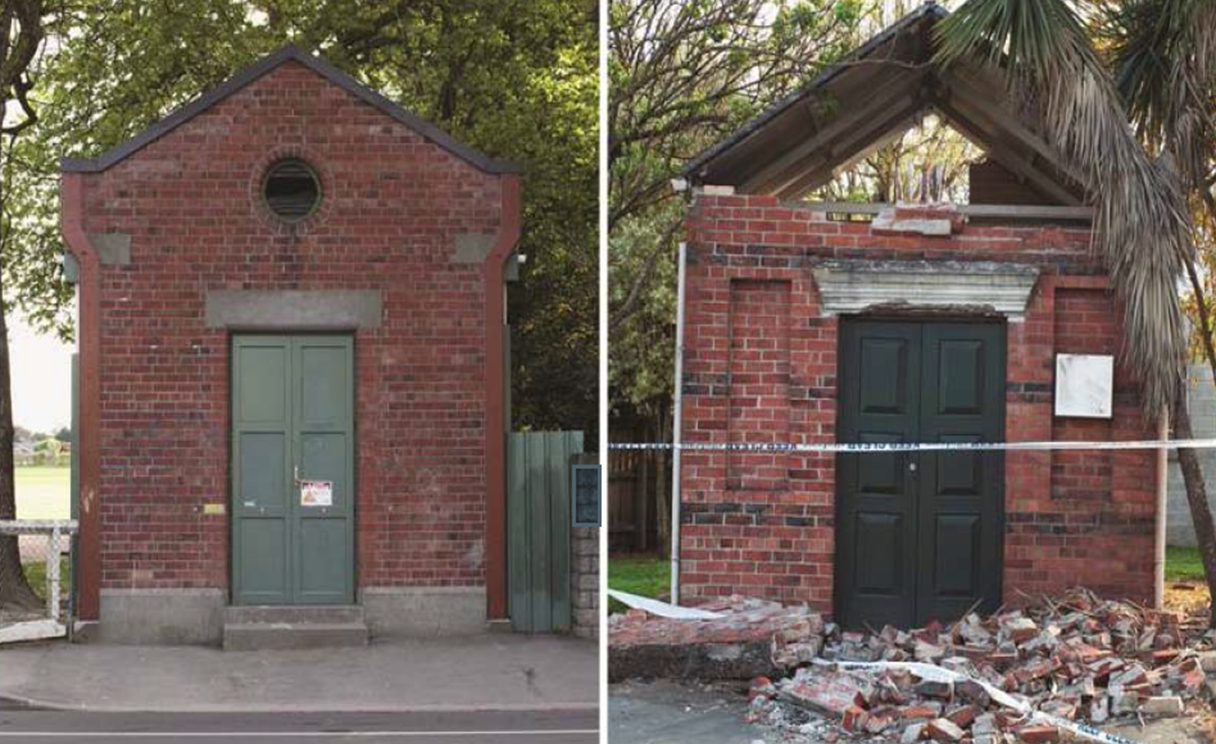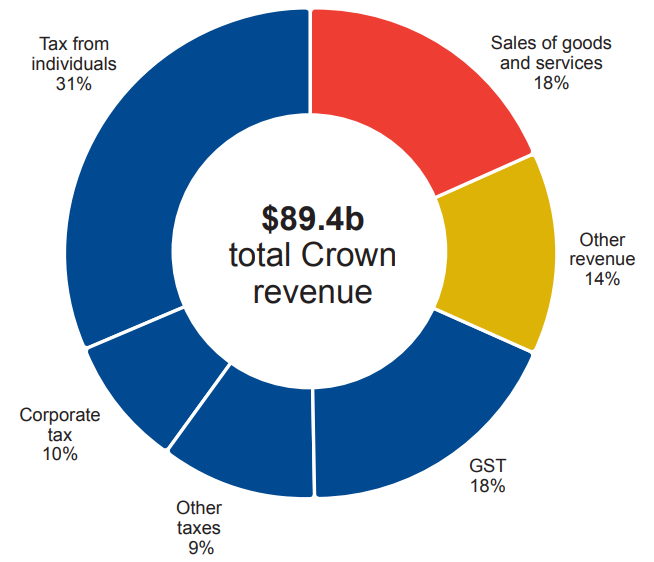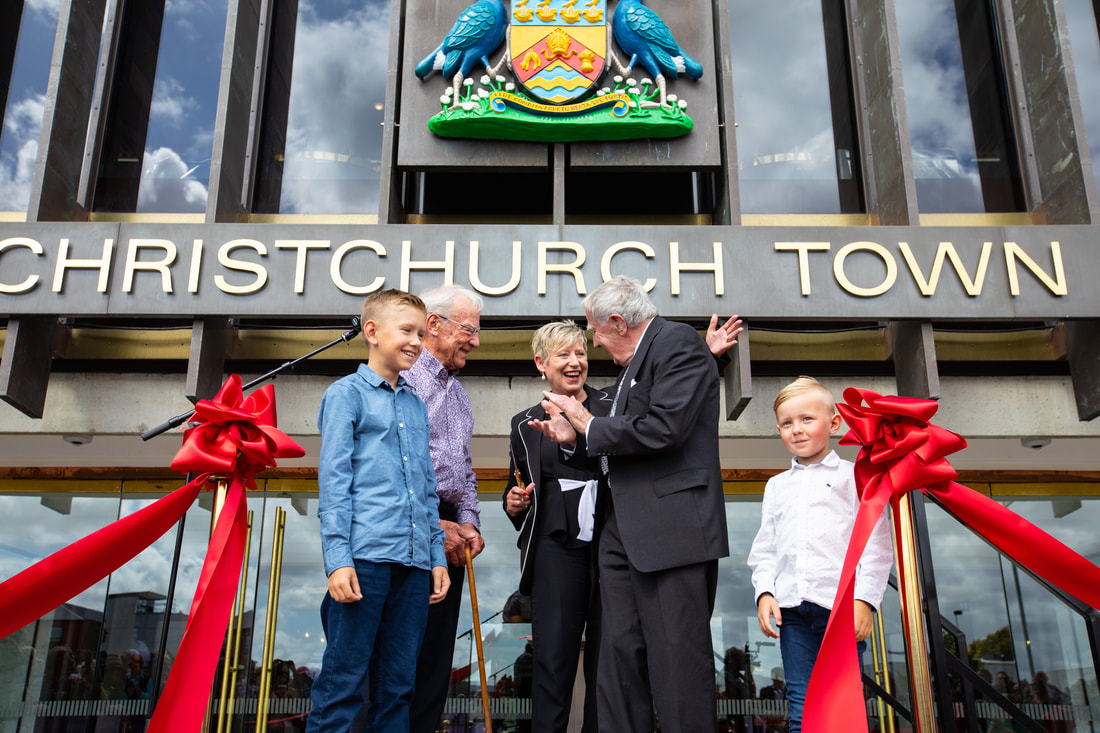
The Importance of Localism
28.02.19
Honourable Lianne Dalziel Mayor of Christchurch
I was really pleased to be asked to provide some initial thoughts on the importance of localism prior to the release of the NZ Initiative report and the LGNZ Discussion Document. It was great to be able to have an advance look at that, because it has really helped me understand why the public debate on localism is not as well advanced or even understood as it should be.
It was the opening chapter which made me open my eyes to what should have been obvious.
I preface what I am going to say by referencing the unique experience of a city that has had a considerable sum of money spent on it by central government. And therein lies the rub.
A localism approach would not have me saying central government spent money on us. I would be saying central government invested with us in the decisions we jointly made with our communities. Sadly that was not to be.
So here’s my ‘aha’ slide. The NZ Initiative report reminds us that we pay central government taxes usually by stealth – not in any shifty sense of the word, but just that we don’t notice it – PAYE and GST are all but invisible to us. Paying tax to local government on the other hand is much more visible. And what’s more central government bolts 15% on top of the rates bill for themselves with the assertion that rates are not taxes, they are payments for goods and services. Yeah right. Receiving a rates bill every quarter is the reminder that we are paying the council for many of the things that we pretty much take for granted. The invoice doesn’t remind us what we are paying for.
Local government touches our lives every day. From flushing the toilet, to turning on the shower, to filling the jug, to putting out the rubbish, to walking on footpaths and driving on roads, to enjoying the public parks and gardens…the list goes on. People don’t always connect their rates to what they pay for.
And then we are reminded that local government gets to do some of the government’s work for them while paying for the privilege.
Dog registration and microchipping, fencing of swimming pools….(that list goes on too).
And central government also gives us ineffective tools – Local Alcohol Plans are meaningless as against the government’s failure to address the real issues that are proven to reduce alcohol related harm – especially the price. And when people engage and they get nowhere – they don’t come back!
And of course when local councils invest in economic growth activities that increase tourism or investment, none of the benefits come back to local government – any increase in GST revenue for example goes straight to the Treasury coffers.
There was a strong reaction to the detailed report put together by our local economic development agency on the nett level of government expenditure on the city’s recovery, which of course was considerably less than the headline sums. It was very much a ‘how dare you’ response.
The irony, as the NZ Initiative points out, is that the average New Zealander pays much more tax to central government than to local government, but it is the local rates they can see, and it is the annual average rate of increase that splashes itself across the headlines of the local papers.
To quote the report:
“This stylised sketch of New Zealand local government shows an unpopular tier of government operating in a highly centralised country. Local government is mostly not well understood and often disliked.”
Welcome to my world - a world I chose when I left central government to take up the Mayoralty in Christchurch.
I am as frustrated by the misconceptions and misunderstanding that surrounds local government as is any other who has not had the benefit of a central government background.
But at least with that background I can see how central government shifts responsibility for action, without providing any mechanisms for funding these roles. There are things that should be paid for by property taxes and development contributions, the costs of infrastructure for one, but there are many things we do and do well at the local level that needs government to rethink the funding for. I am pleased the Productivity Commission has this in its sights, and I hope it is resolved. Because there is more we could do, better than a centralised government agency, which could produce better outcomes for our cities, towns and the nation as a whole.
At the end of my time in central government I talked about the importance of building resilience at the local level as the only real mechanism to future proof the nation – this has only strengthened in my time in this role. For me localism is dependent on building resilience – and that starts at the community level.
In my valedictory speech I said:
“Although I began my time here when the Government was dismantling the underpinnings of the welfare State, I leave here in the firm belief that the answer to that is not to continue to reinstate what cannot survive the turning of a political tide. It is debilitating to any Government to have to spend its first term in office fixing what has been done. The solution is to build a resilient nation, a nation of communities that are resilient to the ebb and flow of political change, by becoming more self-reliant and self-sufficient but also resilient to the emergent challenges that we can no longer predict with any certainty. From welfare State to resilient nation is how I describe my journey of discovery.”
I say this because there will be many that will disagree with a Hayek inspired thesis on competition as being the driver for localism. The truth is that competition, particularly when it is driven by the profit motive, can encourage short termism.
My thesis is that true resilience can only come from an investment in the long game – in other words sacrificing short term profit gains for long term resilience is not a sacrifice, it’s an investment in the future.
Christchurch knows this better than anywhere else. The next slide speaks volumes.
The strengthening of sub-stations and resilience planning undertaken by the council owned lines company, Orion, is a real example of a proactive approach to resilience. After the earthquakes, we can see the impact on a strengthened substation alongside one they had previously given to the local scouting association. This was part of a $6M investment that protected over $60M worth of assets, but more importantly meant power was not off for 3 months or more. I ask myself the question whether a focus on immediate returns and incentives around the annual bottom line would have seen this investment approved, even with reports that identified the potential seismic risk we faced.
The same applies to building community connections – social capital is at the heart of resilient communities – as well we know in Christchurch.
I will come back to that but first I want to invite you to look at a summary of the “Localism 10 reasons why”. I’m letting the first four go. Never underestimate the capacity of local government to mirror the failings of central government especially when it comes to silos. You’d think Christchurch which has seen the benefits of the silos come tumbling down after the earthquake, would have a powerful incentive not to rebuild them. President Donald Trump doesn’t have a patch on public service default settings when it comes to building walls.
- strengthens allocative efficiency
- ensures services reflect local diversity
- provides a check on the potential misuse of public power
- solves the problem of public service silos
- promotes innovation
- strengthens resilience
- leads to better local government
- incentivises councils to invest in economic well-being
- empowers our cities to achieve their economic, social and cultural potential
- reduces the cost of government
I fully agree that we in local government have an obligation to ensure that the investments we make are cost effective. But so should central government. The NZ Initiative has highlighted the reality that the performance of local government is measured in a much more up front and personal way than would ever be applied to central government. And the truth is we can engage and respond better because we are closer to the action. As I said there is work that is currently done by central government when delivery would so much better and cost effective at the local level.
The report reinforces the fact that there is a clear relationship between localism and local government voter turnout. This makes sense. The higher the relevance, the greater the incentive for participation.
This again was evident in the immediate aftermath of the earthquakes.
Share an idea was a campaign by the Council to ask residents what they wanted to see in their city. 10,000 people turned up – 106,000 ideas were submitted. The project was an overwhelming success, and to this day is used as an exemplar of civic engagement and activation. The council received an international award for co-creation.
Unfortunately central government decided to override the process with a 100 day blueprint developed behind closed doors and veiled in confidentiality agreements.
Co-creation became a hollow promise when decision-making left the local intiative behind.
Localism encourages innovation by creating opportunities to try out different approaches, and which engage the community directly.
This means towns and cities have the opportunity to experiment and “try things out”, learning from the experience in a way that central government cannot. And this builds resilience. Communities regain their sense of capacity – we really can do things for ourselves.
This was our experience in Christchurch when the decision was taken to establish a government department to run the city’s recovery. When the department was wound up, all of the soft infrastructure they had created disappeared, and in some instances, as a city, we had to start again. Strong local relationships and fully engaged networks are the foundation stone for any post disaster environment. They can be built on and made stronger, and, more importantly, they don’t disappear.
If we look at the groups that self-organised and engaged in innovative and creative problem solving in the wake of the earthquakes, there is no way you wouldn’t want to harness that energy and capability in the running of the city. When people have an opportunity to genuinely contribute, they come up with amazing initiatives to help themselves and each other across the city - life in vacant spaces, student volunteer army, gapfiller to name but a few. The Ministry of Awesome became a catalyst for the bringing creativity to the fore and creating a way that people could work together in innovative ways. Strong community groups that already existed did the same – Lyttleton Project, Aranui Community Trust….
The social capital that is built when engaging communities in their own future planning decisions, creates deeper bonds and makes them even more able to withstand future shocks and stresses. This is what resilience is all about – social capital.
One of my favourite books is If Mayors Ruled the World. I usually get a laugh when I say that, but Benjamin Barber’s theme is contained in the sub-title - Dysfunctional Nations, Rising Cities. As we all know, the challenges that come with pandemics, terrorism, a global financial crisis or climate change don’t respect lines on a map that create the borders between countries. It is at the local level, that we can develop the capacity to prepare for and resist the impact of such events – and that is why it is cities that are pioneering the work on resilience.
And urban pragmatism can trump national ideology – just look at the reaction of major US cities in response to the United States’ withdrawal from the Paris Accord.
So this brings us back to the theme for today. For me it’s all about trust. It is the essential ingredient that forms the glue between people, groups, communities and their relationships with governments – be they local or national.
We forget, however, that trust is a two way street. Governments – both central and local – need to trust the people too.
I worry that communities have ceded their authority and their capacity to act to governments – I pay my taxes and my rates – so that’s someone else’s job now.
Our experience in Christchurch saw communities empowered as they proved their competence to act, and on the flip side, communities became frustrated and disillusioned when they were excluded.
So where does the capacity to build trust lie – the Beehive or the local town hall.
So I end with a picture from my local supermarket. They stopped me to talk about a pothole. The t-shirt explains localism better than I ever could. “Let me drop everything and work on your problem”.



